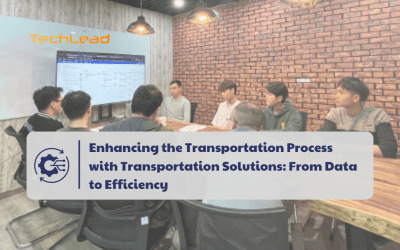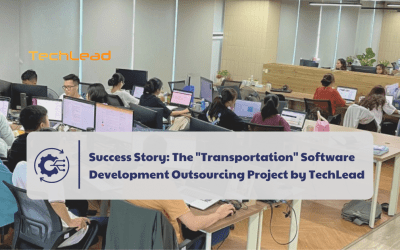The IT staffing landscape is rapidly evolving due to technological advances and changing business needs. This blog explores how these changes impact IT staffing and how organizations are adapting their recruitment and retention strategies to secure essential IT talent.
Introduction to the Current Situation in the Field of IT Staffing
The current landscape of IT staffing is characterized by an unprecedented demand for skilled professionals to meet the growing technological needs of businesses. As digital transformation continues to drive organizational change, the role of IT staffing has become increasingly critical. Companies are constantly on the lookout for talent that can help them leverage new technologies, maintain and improve their IT infrastructure, and drive innovation.
However, the supply of qualified IT professionals has not kept pace with this demand, leading to a significant talent gap. This imbalance has resulted in fierce competition among businesses to attract and retain top IT talent, making IT staffing a strategic priority for many organizations. The reliance on IT staffing agencies and specialized recruitment firms has grown, as these entities possess the expertise and networks necessary to identify and secure high-caliber candidates in a tight labor market.
1. The Importance of IT Staffing in the Digital Age
In the digital age, IT staffing is not just a function of HR but a strategic imperative that directly influences a company’s ability to compete and thrive. IT professionals play a vital role in enabling digital transformation initiatives, which are crucial for improving efficiency, enhancing customer experiences, and driving innovation. The importance of IT staffing is underscored by the need for businesses to continuously adapt to rapidly changing technologies and market conditions. Effective IT staffing ensures that organizations have the right mix of skills to develop and maintain robust IT systems, protect against cybersecurity threats, and exploit new technological opportunities.
Moreover, IT staffing is essential for fostering a culture of innovation within the organization, as having access to a diverse pool of IT talent brings in fresh perspectives and ideas. The strategic alignment of IT staffing with business goals is, therefore, a critical factor in achieving long-term success.
2. Rapid Changes in the IT Field and Their Impact on Manpower Demand
The IT field is characterized by rapid and continuous change, driven by technological advancements, evolving business models, and shifting consumer expectations. This dynamic environment has a profound impact on manpower demand within the sector. New technologies such as artificial intelligence, machine learning, blockchain, and cloud computing are constantly emerging, creating a need for IT professionals with specialized skills in these areas. As a result, IT staffing strategies must be highly adaptive, ensuring that organizations can quickly respond to these changes by sourcing and deploying talent with the requisite expertise.
Additionally, the rise of remote work and the gig economy has transformed traditional IT staffing models, necessitating more flexible and scalable workforce solutions. The ability to rapidly adjust staffing levels and skill sets in response to technological advancements and market shifts is a key competitive advantage. Consequently, IT staffing remains a dynamic and challenging aspect of human resource management, requiring continuous innovation and strategic foresight.
New Trends in IT Staffing
1. Increased Use of Artificial Intelligence and Machine Learning
The integration of artificial intelligence (AI) and machine learning (ML) is revolutionizing IT staffing. Companies are leveraging AI to streamline recruitment processes, from screening resumes to conducting preliminary interviews. AI algorithms can quickly analyze large volumes of data, identifying the best candidates based on specific criteria, which significantly enhances the efficiency of IT staffing.
Furthermore, AI-driven tools are employed in managing employee performance and career progression, offering personalized development plans and identifying skill gaps. The benefits of AI in optimizing the recruitment process are manifold, including reduced time-to-hire, improved candidate matching, and enhanced decision-making accuracy, ultimately leading to a more effective IT staffing strategy.
2.Remote and Hybrid Work Models
The COVID-19 pandemic has accelerated the shift towards remote and hybrid work models, fundamentally transforming IT staffing. The prevalence of remote work has necessitated a reevaluation of traditional staffing strategies, as companies now recruit from a global talent pool. This shift offers numerous advantages, such as access to diverse skill sets and reduced operational costs.
The hybrid model, combining remote and in-office work, presents its own set of challenges and opportunities for IT staffing. It requires robust management strategies to ensure seamless collaboration and communication among team members. IT staffing now demands proficiency in digital tools and platforms that facilitate remote work, making adaptability a crucial trait for modern IT professionals.
3.Demand for Soft Skills
In the evolving landscape of IT staffing, the demand for soft skills has become increasingly prominent. Technical expertise alone is no longer sufficient; communication, time management, and teamwork are critical for success in a collaborative environment.
IT staffing strategies must prioritize these competencies, as they are essential for fostering a productive and harmonious workplace. Companies are investing in training programs to develop these soft skills among their IT staff. Workshops, mentorship programs, and continuous feedback mechanisms are employed to enhance employees’ interpersonal abilities, ensuring they can effectively contribute to team dynamics and project success.
4.Enhanced Employee Training and Development

Continuous training and development are pivotal in IT staffing to keep pace with rapidly evolving technologies. Organizations are investing heavily in comprehensive learning and development programs to ensure their IT staff remain at the forefront of industry advancements. These initiatives include formal education, certifications, and on-the-job training, aimed at updating technical skills and knowledge.
The benefits of long-term learning and development programs are substantial, encompassing improved employee performance, increased job satisfaction, and higher retention rates. By fostering a culture of continuous improvement, companies can build a resilient and agile IT workforce, ready to tackle future challenges and drive innovation.
Changes to Embrace
1. Flexible Transition in Work Models
To effectively adapt to new work models, companies must re-evaluate and redesign their IT staffing strategies. The rise of remote and hybrid work environments necessitates the implementation of robust IT infrastructures and comprehensive support systems. Businesses should invest in secure, scalable solutions that facilitate seamless communication and collaboration among remote teams.
Additionally, it’s crucial to develop policies that support flexibility, ensuring that IT staff can maintain productivity while working from various locations. This shift not only optimizes operational efficiency but also broadens the talent pool, enabling organizations to attract top IT staffing candidates from different geographical areas.
The benefits of flexibility in human resource management are manifold. By adopting flexible work arrangements, companies can significantly enhance employee satisfaction and retention. IT staffing professionals often seek roles that offer work-life balance, making flexible policies a key factor in attracting and retaining top talent. Moreover, flexible work models can lead to cost savings on office space and related expenses. They also enable organizations to quickly adapt to changing business needs, ensuring that IT staffing levels can be scaled up or down in response to project demands.
2.Investment in Technology and Training
Investing in technology is paramount for enhancing work efficiency, particularly in the realm of IT staffing. Advanced tools and platforms can automate routine tasks, streamline workflows, and improve overall productivity. For instance, integrating AI-driven applications can assist IT staffing managers in identifying skill gaps, optimizing resource allocation, and predicting future staffing needs. By leveraging these technologies, companies can ensure that their IT teams are equipped to handle complex projects with greater accuracy and speed.
Continuous investment in employee training is equally important. The rapid evolution of technology means that IT staffing professionals must constantly update their skills to stay relevant. Organizations should prioritize comprehensive training programs that cover the latest technological advancements and industry best practices. This commitment to ongoing education not only enhances the capabilities of the IT staff but also fosters a culture of continuous improvement. Well-trained employees are more likely to innovate, solve problems effectively, and contribute to the company’s long-term success.
3. Enhanced Management and Analysis of Human Resource Data
The application of data analytics in human resource management is revolutionizing the IT staffing landscape. By harnessing the power of data, companies can gain valuable insights into employee performance, engagement, and turnover rates. Predictive analytics can help identify trends and patterns that inform strategic decisions, such as optimizing staffing levels and identifying areas for skill development. Utilizing data-driven approaches ensures that IT staffing strategies are based on empirical evidence rather than intuition, leading to more effective and efficient management practices.
Strategic decision-making in IT staffing is greatly enhanced by the use of data. For example, data analytics can reveal the effectiveness of different recruitment channels, helping managers allocate resources more efficiently. It can also identify high-performing employees and potential leaders within the organization, guiding career development and succession planning efforts. By systematically analyzing HR data, companies can implement targeted strategies that improve recruitment, retention, and overall IT staffing performance, ultimately driving business success in the digital age.
Conclusion
The IT HR landscape is rapidly evolving with key trends such as AI and machine learning in recruitment, remote working models, and the growing importance of soft skills. Adapting to these changes is vital for businesses to remain competitive and attract top talent. Businesses should invest in training, promote flexibility and foster an inclusive culture to optimize workforce management.
Accepting these changes ensures competitiveness in the digital economy. AI in recruiting and the flexibility of remote work enable access to a diverse talent pool. Developing soft skills along with technical expertise will enhance team dynamism and innovation.
To effectively address IT staffing challenges, businesses should invest in ongoing training, promote flexibility, and foster an inclusive culture. These strategies help attract talent, improve retention, and drive organizational success in the digital age. These strategies help attract talent, improve retention, and drive organizational success in the digital age.
Refer to information about IT staffing here: https://www.cprime.com/resources/blog/what-you-should-know-about-it-staffing-as-a-recruitment-approach-before-getting-started/
Contact TechLead today for the best software solutions consultation that helps accelerate your business processes!
Contact Information: https://www.techlead.vn
TECHLEAD – Leading technology solution for you!
Hotline: 0372278262
Website: https://www.techlead.vn
Linkedin: https://www.linkedin.com/company/techlead-vn/
Email: [email protected]
Address: 4th Floor, No. 11, Nguyen Xien, Thanh Xuan, Hanoi





